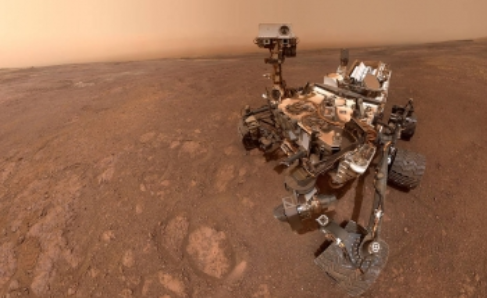America
Curiosity rover completes 4,000 days on Mars: NASA

Washington, Nov 7
NASA's Curiosity Rover has successfully completed four thousand days on Mars conducting exciting science.
The rover first landed on Mars’ Gale Crater on August 5, 2012 to study whether ancient Mars had the conditions to support microbial life.
The car-sized rover has been gradually ascending the base of 5-kilometre-tall Mount Sharp, whose layers formed in different periods of Martian history and offer a record of how the planet's climate changed over time.
It recently drilled its 39th sample and dropped the pulverised rock into its belly for detailed analysis.
The sample was collected from a target nicknamed "Sequoia".
Scientists hope the sample will reveal more about how the climate and habitability of Mars evolved as this region became enriched in sulphates -- minerals that likely formed in salty water that was evaporating as Mars first began drying up billions of years ago.
Eventually, Mars's liquid water disappeared for good.
"The types of sulphate and carbonate minerals that Curiosity's instruments have identified in the last year help us understand what Mars was like so long ago. We've been anticipating these results for decades, and now Sequoia will tell us even more," said Ashwin Vasavada, Curiosity's project scientist at NASA's Jet Propulsion Laboratory in Southern California, which leads the mission, in a statement.
Despite having driven almost 32 kilometres through a punishingly cold environment bathed in dust and radiation since 2012, Curiosity remains strong.
Engineers are currently working to resolve an issue with one of the rover's main "eyes" -- the 34 mm focal length left camera of the Mast Camera (Mastcam) instrument.
In addition to providing colour images of the rover's surroundings, each of Mastcam's two cameras helps scientists determine from afar the composition of rocks by the wavelengths of light, or spectra, they reflect in different colours.
Mission engineers also continue to closely monitor the performance of the rover's nuclear power source and expect it will provide enough energy to operate for many more years.
They have also found ways to overcome challenges from wear on the rover's drill system and robotic-arm joints.
Software updates have fixed bugs and added new capabilities to Curiosity, too, making long drives easier for the rover and reducing wheel wear that comes from steering (an earlier addition of a traction-control algorithm also helps reduce wheel wear from driving over sharp rocks).
Meanwhile, the team is preparing for a phenomenon known as solar conjunction, where Mars is about to disappear behind the Sun.
Plasma from the Sun can interact with radio waves, potentially interfering with commands during this time.
Engineers are leaving Curiosity with a to-do list from November 6 to 28, after which period communications can safely resume.

19 minutes ago
Trump calls Afghanistan withdrawal 'most embarrassing moment' in US history

23 minutes ago
South Korea, US, Japan arranging three-way talks at ASEAN meetings

1 hour ago
Massive Russian attack in Kyiv; two dead, 16 injured; Ukraine appeals for aid.

2 hours ago
Flood threat: More than half of the homes not included in FEMA's maps; a critical finding.

3 hours ago
Baahubali - The Epic to release on October 31, says director S S Rajamouli

3 hours ago
Anushka Shetty pens post of gratitude to her guru Bharat Thakur on Guru Purnima

3 hours ago
Huma Qureshi opens up about audition struggles and finding strength in brother Saqib Saleem

3 hours ago
‘Panchayat 5’ will have an election plot twist, Neena Gupta and the writer tease in a light-hearted conversation

3 hours ago
‘Wake Up Dead Man: A Knives Out Mystery’ to open 69th BFI London Film Festival

3 hours ago
Sameera Reddy fights malevolent spirit in ‘Chimni’ teaser

3 hours ago
Kerala Govt gives Rs 10 lakh, job to son of woman who died in medical college building collapse

3 hours ago
Bihar Police bans make-up for women cops on duty

3 hours ago
Trump announces tariffs on imports from Sri Lanka, Iraq and five other nations
































